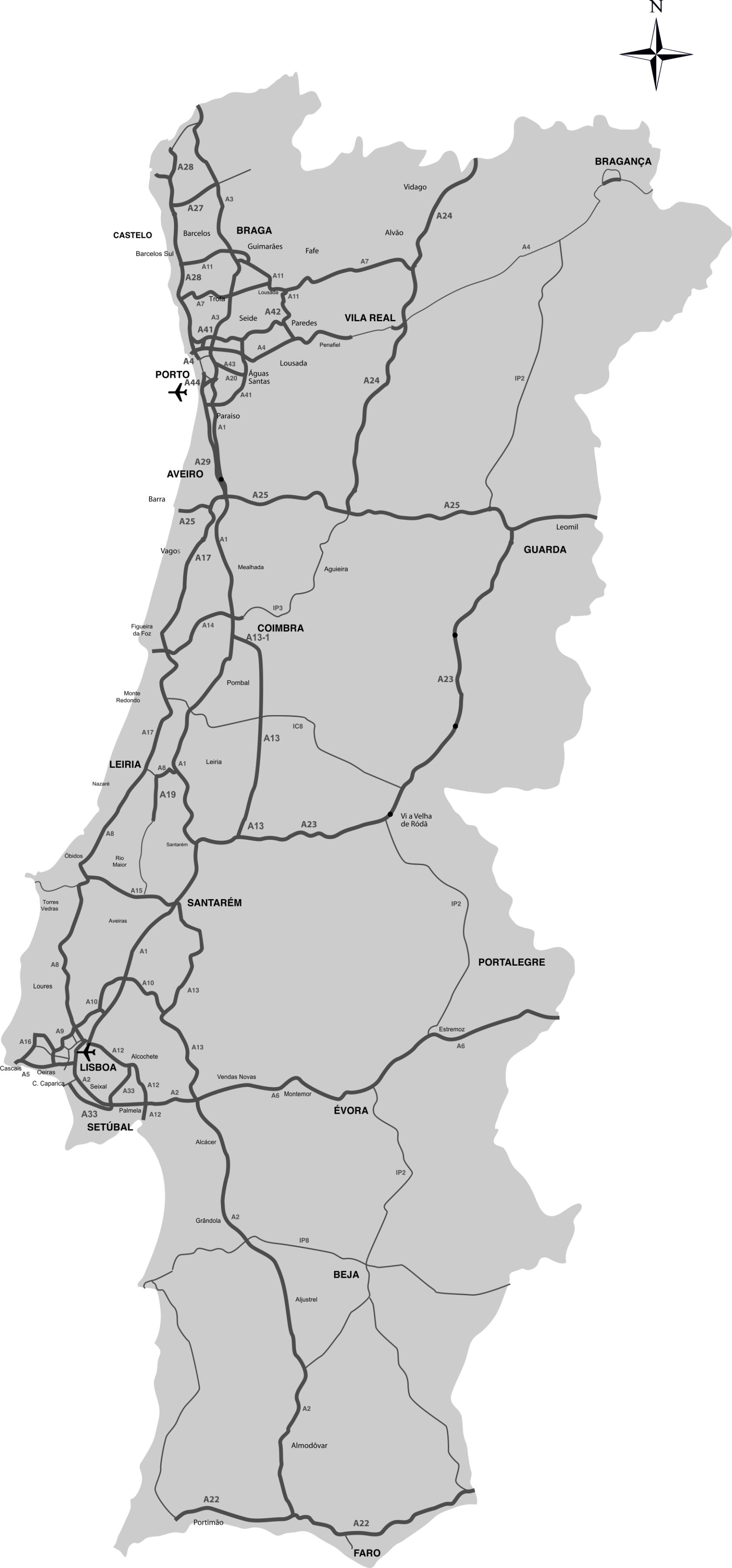Population
Portugal has, according to Censos 2021, 10 343 066 inhabitants, with 542 165 being of foreign origin. Predominantly, the population is around 45 years old. Abroad, there are 5.2 million Portuguese and their descendants, with 2.3 million born in Portugal.
Portugal has two official languages, Portuguese and Mirandês, spoken in Miranda do Douro, even though the language is gradually dying, Miranda do Douro is trying to maintain the patrimony of this idiom in the region.
Areas
The whole territory of Portugal, including the Archipelagos of Azores and Madeira, has an area of 92 256 km2. The Portuguese territory is divided into 18 districts, and two Autonomous regions, the Archipelagos of Azores and Madeira. The Azores is composed of nine islands, being in São Miguel its main town, Ponta Delgada. When it comes to Madeira, the archipelago has two islands, Madeira and Porto Santo, with the capital Funchal, located in Madeira.
Portugal has the largest Economic Exclusion Zone (EEZ) of the European Union, being in charge of approximately 1,7 million km2 of the Atlantic Ocean, which means, Portugal has 48% of the European Union Sea waters.
Being a country so close to the Atlantic Ocean, Portugal is well known for its beaches. There are approximately 660 beaches in the Portuguese territory, along the 2500 km of coastline. Portugal also has dozens of rivers, that are difficult to count, as most of them derive from the main rivers that cross Portugal. It is estimated that Portugal has more than 50 rivers, some of them bathing some iconic river beaches, especially in the interior of Portugal.
Moving around
According to Pordata, Portugal has 3,111 kilometres of highways, that make people’s travel faster and easier. Highways are usually linked to other routes, which according to Infraestruturas de Portugal (IP), 2325 kilometres of Itinerários Principais (IP), such as IP3, linking Viseu to Figueira da Foz, 1925 kilometres of Itinerários Complementares, such as IC2, which links Lisbon to Porto, and 4862 kilometres of Estradas Nacionais (EN), just like EN125, in the Algarve.

For those who like to travel by train, Portugal has 3621,6 kilometres of tracks, although only 2,527 kilometres are being used. Out of all the railways that are on 1791 kilometres (71%) only circulate electric trains, which makes trains an eco-friendly means of transport. Along the Portuguese railway, there are 561 train stations in service, and 2,000 tunnels and bridges, constructed specifically for train circulation.

In Portugal, there are 10 airports, 4 of them are located in Continental Portugal and the rest in the Autonomous Regions of Azores and Madeira. The airport facilitates travel in or out of Portugal, and are incredibly important, especially when it comes to aiding tourism.
To the highest places
Portugal also has well-known mountain ranges, but some of them are known for being the highest in the territory.

Serra da Estrela is home to the highest point of Continental Portugal, at 1,993 metres high. The place is visited by many Portuguese and tourists from abroad, as it is a place where snow falls quite often.
However, Ilha do Pico, in the Azores, is the highest point in Portugal. A volcano that is 2,351 metres high. This is a famous hiking route with many people choosing to challenge themselves to climb up to the top of Pico.
Portugal may not be the largest country in Europe, but all the infrastructure and natural features help to make this country one of the greatest pearls in the world.
Deeply in love with music and with a guilty pleasure in criminal cases, Bruno G. Santos decided to study Journalism and Communication, hoping to combine both passions into writing. The journalist is also a passionate traveller who likes to write about other cultures and discover the various hidden gems from Portugal and the world. Press card: 8463.

















Thank you for a very interesting article.
By Billy Bissett from Porto on 30 Oct 2023, 10:47